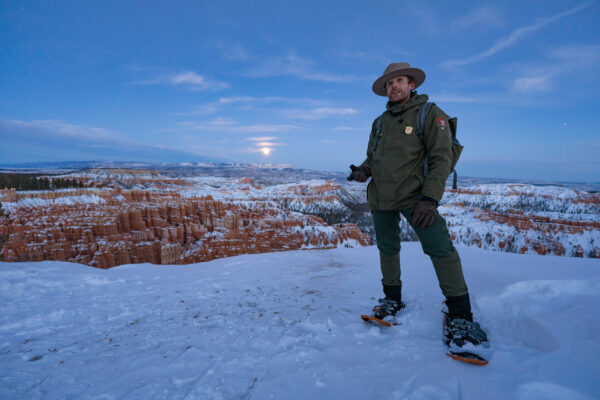New report shows visitor spending supports 23,312 jobs in Utah
DENVER, Colo. – A new National Park Service (NPS) report shows that 13,554,654 visitors to national parks in Utah spent $1,656,100,000 in the state in 2022. That spending resulted in 23,312 jobs and had a cumulative benefit to the state economy of $2,597,700,000.
“Since 1916, the National Park Service has been entrusted with the care of our national parks. With the help of volunteers and partners, we safeguard these special places and share their stories with more than 300 million visitors every year. The impact of tourism to national parks is undeniable: bringing jobs and revenue to communities in every state in the country and making national parks an essential driver to the national economy,” said National Park Service Director Chuck Sams.
“Visitors in 2022 to national parks in Utah spent $1,656,100,000 and supported 23,312 jobs in local communities,” said Regional Director Kate Hammond. “Every park in the state offers unique experiences, from learning about history up-close to diverse outdoor recreational opportunities. There’s something for everyone to see and enjoy.”
The national parks in Utah are:
Arches National Park
California National Historic Park
Canyonlands National Park
Capitol Reef National Park
Cedar Breaks National Monument
Dinosaur National Park
Glen Canyon National Recreation Area
Golden Spike National Historical Park
Hovenweep National Monument
Mormon Pioneer National Historic Trail
Natural Bridges National Monument
Old Spanish National Historic Trail
Pony Express National Historic Trail
Rainbow Bridge National Monument
Timpanogos Cave National Monument
Zion National Park
The peer-reviewed visitor spending analysis was conducted by economists at the National Park Service. The report shows $23.9 billion of direct spending by nearly 312 million park visitors in communities within 60 miles of a national park. This spending supported 378,400 jobs nationally; 314,600 of those jobs are found in these gateway communities. The cumulative benefit to the U.S. economy was $50.3 billion.
As for the economics of visitor spending, the lodging sector had the highest direct effects, with $9 billion in economic output nationally. The restaurants sector had the second greatest effects, with $4.6 billion in economic output nationally.
Report authors also produced an interactive tool that enables users to explore visitor spending, jobs, labor income, value added, and output effects by sector for national, state, and local economies. Users can also view year-by-year trend data. The interactive tool and report are available at the NPS Social Science Program webpage: Visitor Spending Effects – Economic Contributions of National Park Visitor Spending – Social Science (U.S. National Park Service) (nps.gov).
To learn more about national parks in Utah and how the National Park Service works with Utah communities to help preserve local history, conserve the environment, and provide outdoor recreation, go to Utah (U.S. National Park Service) (nps.gov).
– National Park Service
Feature image caption: Peter Densmore starts a full moon snowshoe hike tour in Bryce Canyon National Park. Courtesy NPS.
National Park Service
More than 20,000 National Park Service employees care for America’s national parks and work with communities across the nation to help preserve local history and create close-to-home recreational opportunities. Learn more at www.nps.gov, and on Facebook, Instagram, Twitter, and YouTube.

